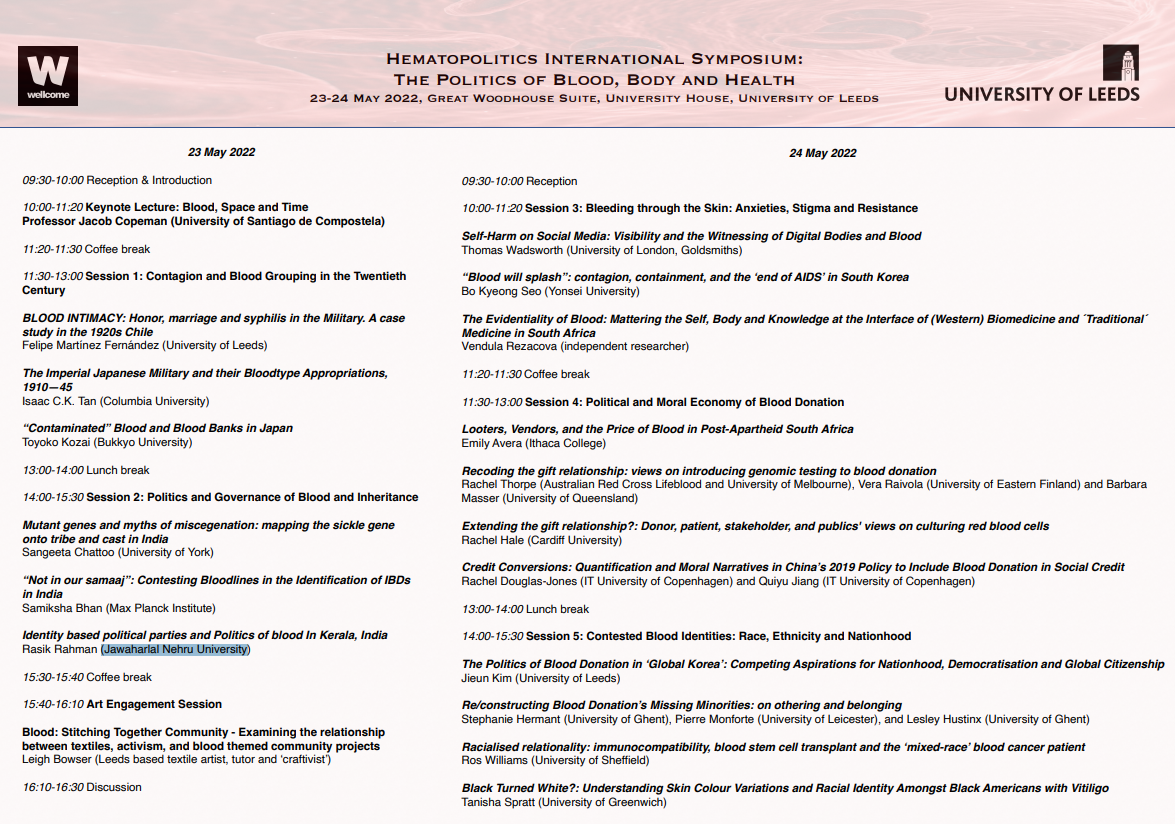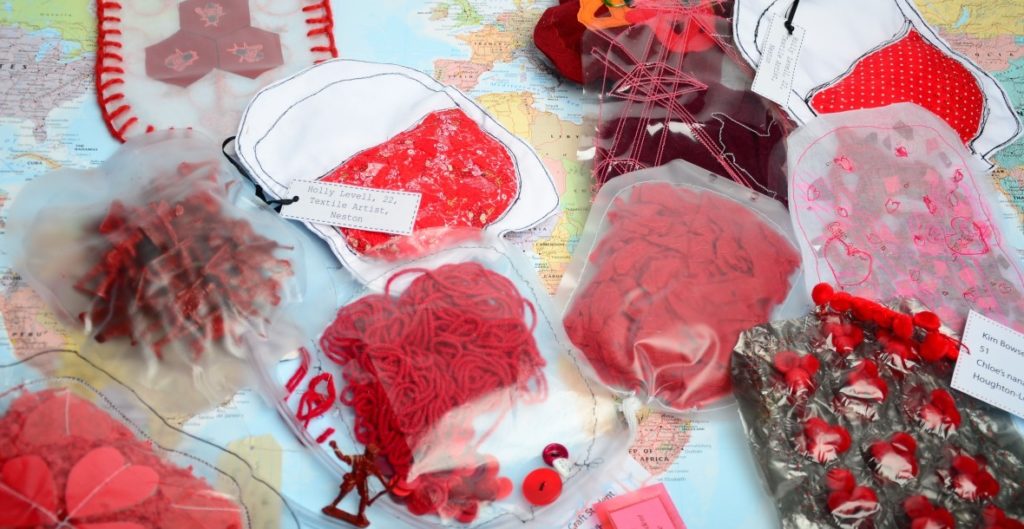
In May we were lucky enough to welcome colleagues and collaborators from across the globe for a stimulating two day symposium at the University of Leeds. Following months of online workshops, meetings and conferences, it felt like an incredible privilege that Covid didn’t prevent anyone from travelling, with us being able to welcome guests from as far as the US and Korea!
We began with an energising Keynote delivered by Professor Jacob Copeman , considering the space-time dimensions of blood economies. Detailing the diverse ways in which blood invokes temporal discourse, from its material status as a highly perishable resource, to its historical connections to political violence and loss of life, Prof. Copeman sought to explore the role of blood donation within the current political climate of India.
The Symposium took place as a fully hybrid event, with speakers from our first session ‘Contagion and Blood Grouping in the Twentieth Century’, all being online. The first presentation from Isaac C.K. Tan covered the emergence of blood type analysis in Japanese military medical research, followed by a presentation from Toyoko Kozai looking at the role of blood transfusions in first spreading, and then detecting, contagious diseases in Japan. Whilst there are no guarantees that online and hybrid events will be able to stimulate the same depth of conversation that can be achieved in person, we were pleasantly surprised with how connected in person attendees felt to those online. We were able to field questions from the room for the online presenters, using a roving camera to ensure that everyone could see who they were talking to.
The second session, ‘Politics and Governance of Blood and Inheritance’, firstly explored the contested and racialised nature of inherited blood disorders such as Sickle Cell Anaemia through presentations from Sangeeta Chattoo and Samiksha Bhan. They both considered how tribe, cast, race, and ethnicity influenced perception of such disorders in India. The final presentation from Rasik Rahman reflected on some of the themes drawn out in the Keynote presentation, looking at how political parties utilise blood donation as a political tool in India.
We closed the first day with an opportunity to learn more about the work of Leigh Bowser, a Leeds based textile artist and collaborator of the Hematopolitics Project. As well as reflecting on the potential of textiles for communicating stories, we were able to hear more about ‘The Blood Bag Project’, which she founded a decade ago. The project sought to raise awareness of the rare blood disorder Diamond Blackfan Anaemia, by inviting participants to craft their own textile blood bag, starting conversations about blood donation, and ultimately hoping to encourage people to donate blood and sign up to be a bone marrow donor. You can find out more about the Blood Bag Project here.
